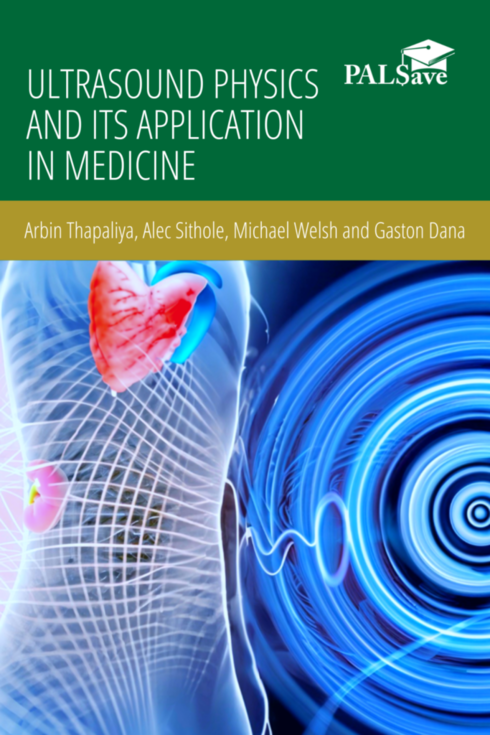










This book is a very thorough introduction to the "how it works" of ultrasonography.
Content Accuracy rating: 5
Accurate entry-level text.
Relevance/Longevity rating: 4
The only section of this book that may not be "evergreen" is the discussion of COVID-19. I agree with its inclusion, but as time goes on the situation (and knowledge) will evolve in a way that may make this part of the text less current. As an example: "The disease is widespread, the actual effectiveness of isolation is unknown, testing has been inaccurate for the most part. "
Clarity rating: 5
Very approachable in its writing style.
Consistency rating: 5
Author's approach is consistent and easy to read.
Modularity rating: 5
The book is divided into logical sections that build on each other and make sense for a modular approach.
Organization/Structure/Flow rating: 5
The flow of the text is very logical, building from a review of relevant physics to a very thorough review of practical ultrasound knowledge for different regions of the body.
Interface rating: 5
Clean and easy to read.
Grammatical Errors rating: 5
No errors observed.
Not really relevant to this topic.
Ultrasound has a wide range of medical applications. Some of these include obstetrics (monitoring the progress of pregnancy), oncology (monitoring the growth of tumors), cardiology (visualizing the heart function and physiology), biopsy (guiding needles in various procedures), and physiotherapy. For example, today, an estimated 60-70% of pregnant women in the United States undergo ultrasound examination during pregnancy. An estimated 250 million fetal ultrasound examinations are performed every year in the USA. In the last few decades, ultrasound technology has expanded to medical imaging in various other specialties: Anesthesiology, Critical Care, Emergency Medicine, General Pediatrics, Internal Medicine, Obstetrics and Gynecology (OB-GYN), Pediatric Emergency Medicine, Physiatry, Sports Medicine, and Surgery. The increasing demand in the use of ultrasound technology in various biomedical fields points to a future in which medical professionals will be required to possess a general knowledge of ultrasound technology. While currently most medical professionals rely on technicians to perform the imaging studies, there can be a high degree of operator dependent results. Therefore, a solid foundation of the technological properties of ultrasound would give health care providers a competitive advantage in the future. This is one of the first goals of this textbook. This textbook also covers general aspects of diagnostic ultrasound providing an excellent reference for both beginners and professionals. In addition, this textbook has end-of-the-chapter experiments that will help educators conduct labs for students and any other learners to enhance their learning and solidify the practical skills.
Dr. Arbin Thapaliya received his Ph.D. and M.S. in nuclear and particle physics from Ohio University. He also holds a M.Sc. degree in condensed matter physics and a B.Sc. in physics and mathematics from Tribhuvan University. Dr. Thapaliya has over 13 years of teaching experience in higher education. He has developed and taught courses in ultrasonography, radiation and health, and biomedical optics. Dr. Thapaliya has also authored several scientific publications in the areas of nuclear and particle physics, statistics, and diagnostic sonography.
Dr. Alec Sithole received his Ph.D. in applied physics and M.S. in physics from Portland State University. He also holds an MBA (organizational management) from Eastern University and an M.Sc. in agricultural meteorology and a B.Sc. (honors) in physics from the University of Zimbabwe. Dr. Sithole has over 17 years of experience in teaching in higher education. He has authored several scientific articles and book chapters.
Dr. Michael J. Welsh received his medical degree from Indiana University of the Health Sciences. He has the following certifications: family medicine, RDMS (registered diagnostic medical sonographer—abdominal and obstetrics-gynecology), RVT (registered vascular technician), and RDCS (registered diagnostic cardiac sonographer). Dr. Welsh is also the president and cofounder of Point of Care Ultrasound. He has been practicing for over 30 years in emergency and geriatric medicine. His academic interest is focused on the education of clinicians on current ultrasound modalities.
Dr. Gaston Dana received his doctorate in osteopathic medicine from Nova Southeastern University of the Health Sciences. He is certified in internal medicine, emergency medicine, undersea and hyperbaric medicine, wound care and surgery, musculoskeletal and vascular sonography, and medical acupuncture. He has over 30 years of experience in practice as a physician. He uses ultrasound routinely as part of his clinical practice. He is the medical director of the Wound and Vascular Center at Johnson Memorial Hospital.
Katie Marshall